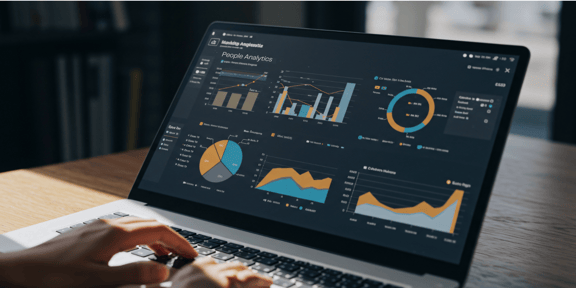People Analytics

People analytics: making data-driven decisions with HR metrics
People analytics helps HR teams make decisions based on data rather than intuition. By evaluating KPIs, metrics and behavioural patterns, processes become more transparent, developments become recognisable and strategies can be managed in an evidence-based manner
What does people analytics mean in an HR context?
People analytics – also known as HR analytics – describes the analysis of personnel data to improve strategic and operational HR decisions. The aim is to identify patterns, optimise HR measures and plan effectively.
People analytics vs. traditional personnel controlling
While personnel controlling tends to focus on reporting and key figures, people analytics goes beyond this to include predictive models, visualisations, strategic planning and behavioural analysis.
Using HR key figures and KPIs correctly
Typical HR key figures include turnover rate, time-to-hire, applicant sources and sick leave. Selected HR KPIs can be visualised in dashboards and form the basis for management decisions.
Tools & software for people analytics
Modern systems such as HR Analytics from beesite enable real-time evaluations, interactive dashboards and integration with applicant management or time management systems.
FAQs: Frequently asked questions about people analytics
1. How do I get started with people analytics?
The best way to get started is with a few, well-chosen KPIs that are already being collected in the company. These should first be evaluated manually in order to gain initial insights. In the next step, automated dashboards can be introduced and the analysis processes can be gradually developed further.
2. What are the risks of using people analytics?
The most common risks include data protection violations (e.g. under the GDPR), misinterpretation of data and a lack of data literacy in the HR team. Careful handling of sensitive information and targeted training are therefore essential.
3. Which roles are involved in people analytics?
People analytics is ideally an interdisciplinary project. Typically, HR controlling, people analysts, the IT department and HR business partners are involved. Only through the interaction of these areas can data be meaningfully evaluated and measures effectively implemented.
People analytics brings transparency to HR processes and creates the basis for forward-looking action. Those who make data-based decisions save costs, increase the quality of HR work and become strategic partners to management.